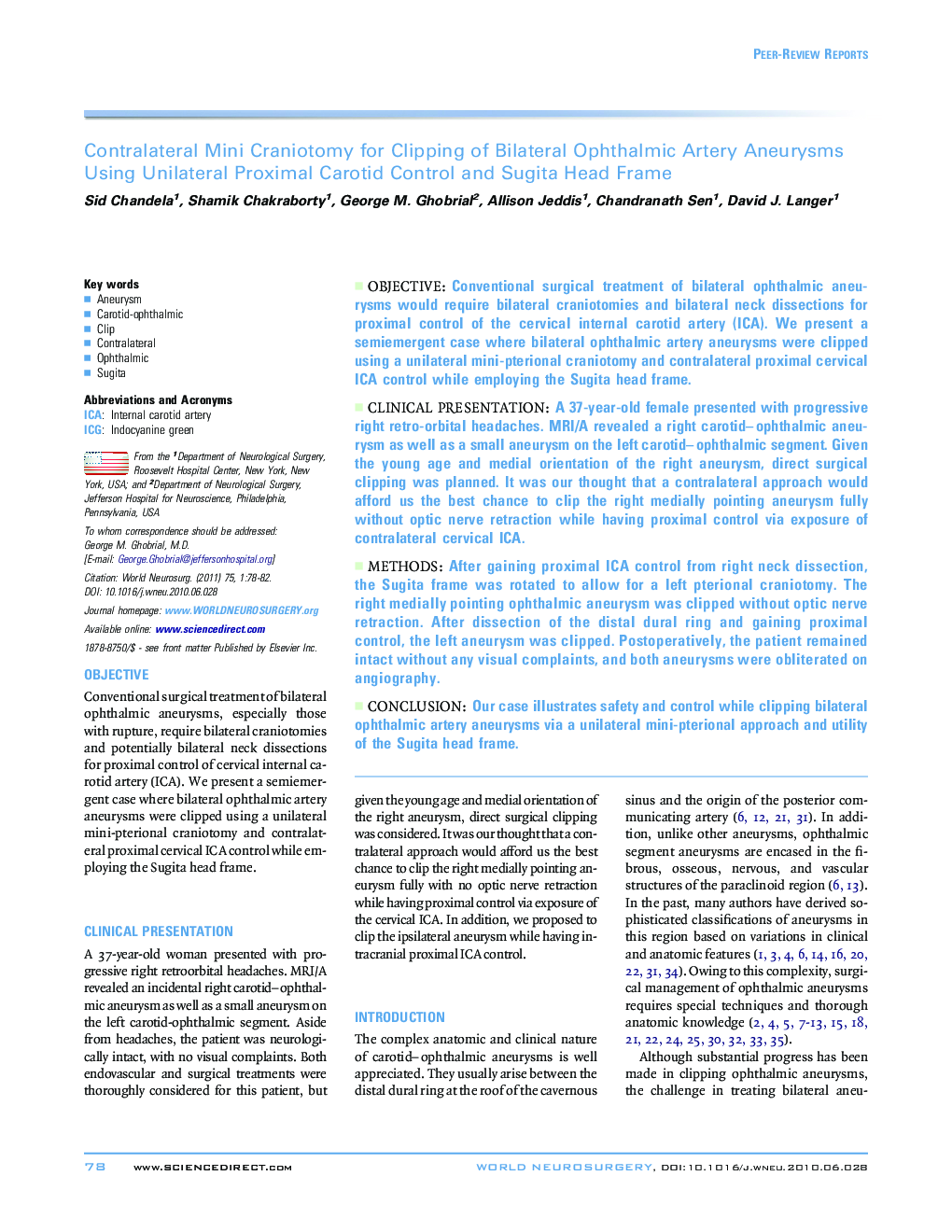| کد مقاله | کد نشریه | سال انتشار | مقاله انگلیسی | نسخه تمام متن |
|---|---|---|---|---|
| 3095996 | 1190919 | 2011 | 5 صفحه PDF | دانلود رایگان |

ObjectiveConventional surgical treatment of bilateral ophthalmic aneurysms would require bilateral craniotomies and bilateral neck dissections for proximal control of the cervical internal carotid artery (ICA). We present a semiemergent case where bilateral ophthalmic artery aneurysms were clipped using a unilateral mini-pterional craniotomy and contralateral proximal cervical ICA control while employing the Sugita head frame.Clinical PresentationA 37-year-old female presented with progressive right retro-orbital headaches. MRI/A revealed a right carotid–ophthalmic aneurysm as well as a small aneurysm on the left carotid–ophthalmic segment. Given the young age and medial orientation of the right aneurysm, direct surgical clipping was planned. It was our thought that a contralateral approach would afford us the best chance to clip the right medially pointing aneurysm fully without optic nerve retraction while having proximal control via exposure of contralateral cervical ICA.MethodsAfter gaining proximal ICA control from right neck dissection, the Sugita frame was rotated to allow for a left pterional craniotomy. The right medially pointing ophthalmic aneurysm was clipped without optic nerve retraction. After dissection of the distal dural ring and gaining proximal control, the left aneurysm was clipped. Postoperatively, the patient remained intact without any visual complaints, and both aneurysms were obliterated on angiography.ConclusionOur case illustrates safety and control while clipping bilateral ophthalmic artery aneurysms via a unilateral mini-pterional approach and utility of the Sugita head frame.
Journal: World Neurosurgery - Volume 75, Issue 1, January 2011, Pages 78–82